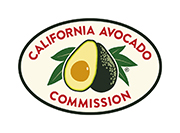A grower’s profit margin is the difference between the input costs to produce a marketable crop and the gross amount of money realized from the sale of the “output”, or the production itself. Anything that affects one or both of these can make the difference between profit and loss. The management of the avocado tree under southern California conditions, which can experience rapid changes in temperature and relative humidity, provides a challenge under the best of conditions. Increasing market competition from other countries is pressuring the California grower to become increasingly ingenious in orchard management practices so that profits can be made, including changes in irrigation schedules and tree management strategies. For example, more growers are pruning older trees or considering high-density plantings. These canopy management strategies hinge on effective light management to increase fruit size and production. However, current strategies used to manage tree canopies and tree water status were poorly understood. This project has been examining, in detail, the response of avocado leaves to light, temperature, and changes in light and temperature by analyzing carbon assimilation (which fuels both tree and fruit growth) and changes in evaporative demand (which governs the amount of water the tree requires). The goal of this project was a better understanding of the tree’s response to California’s environmental stresses, which, in turn, has allowed us to develop a model of carbon assimilation in the canopy based upon the environmental conditions. The results of this research will provide a valuable framework for cultural management decisions and future research on the physiology of the avocado.


